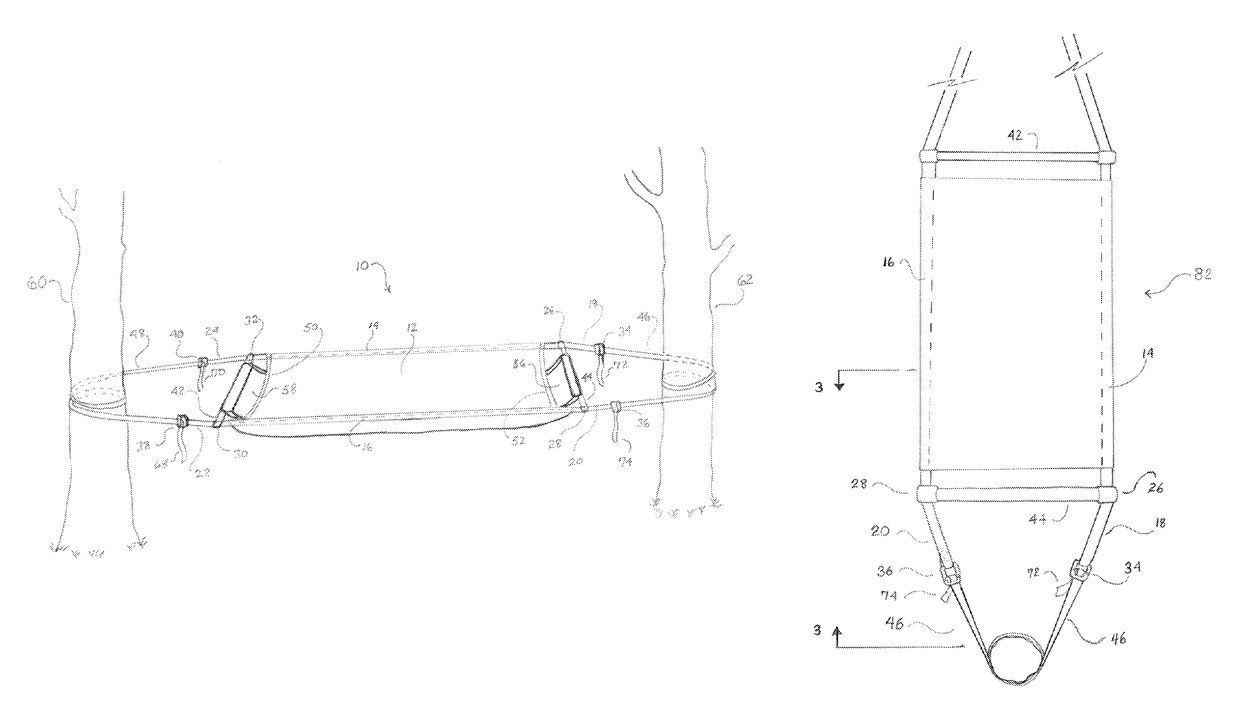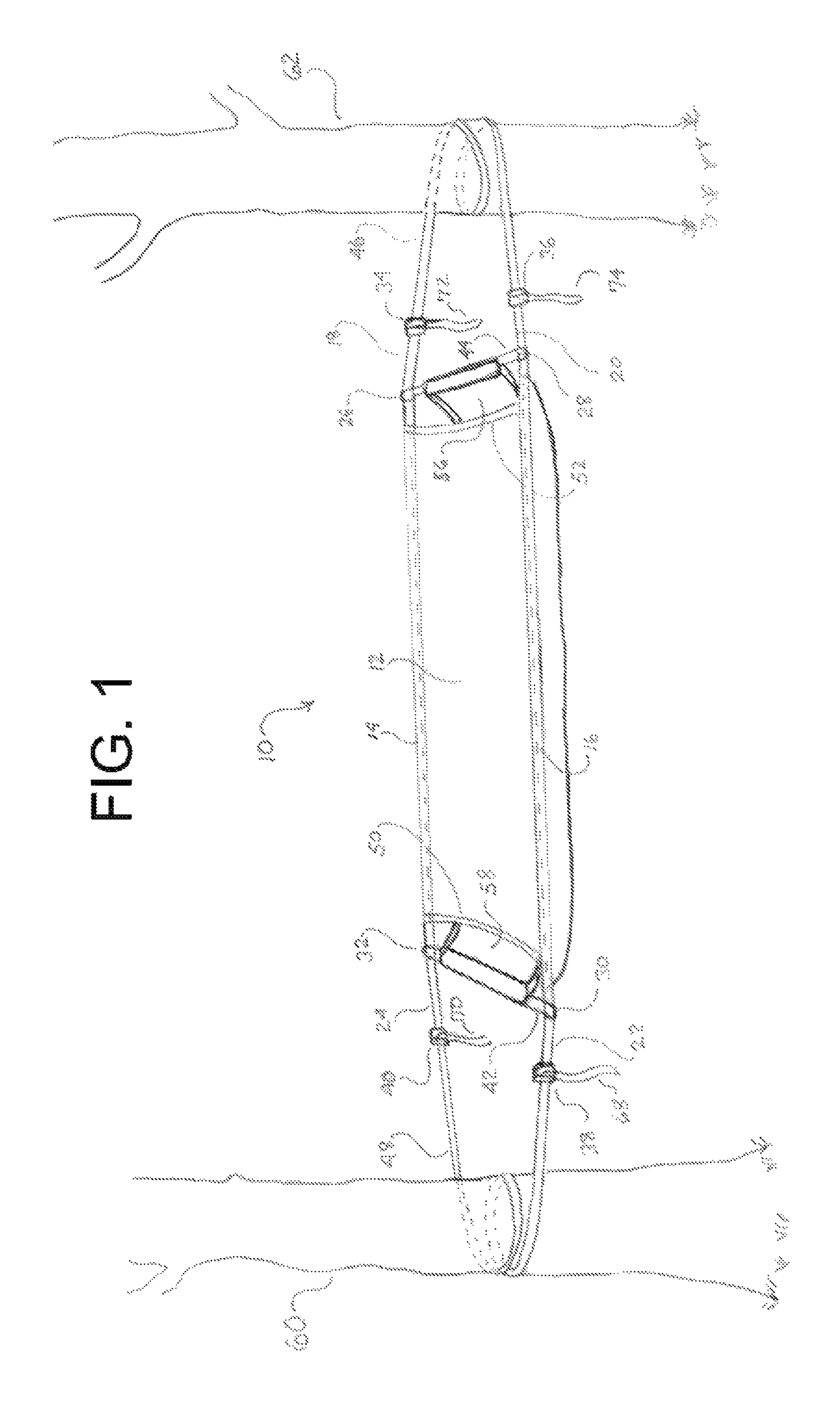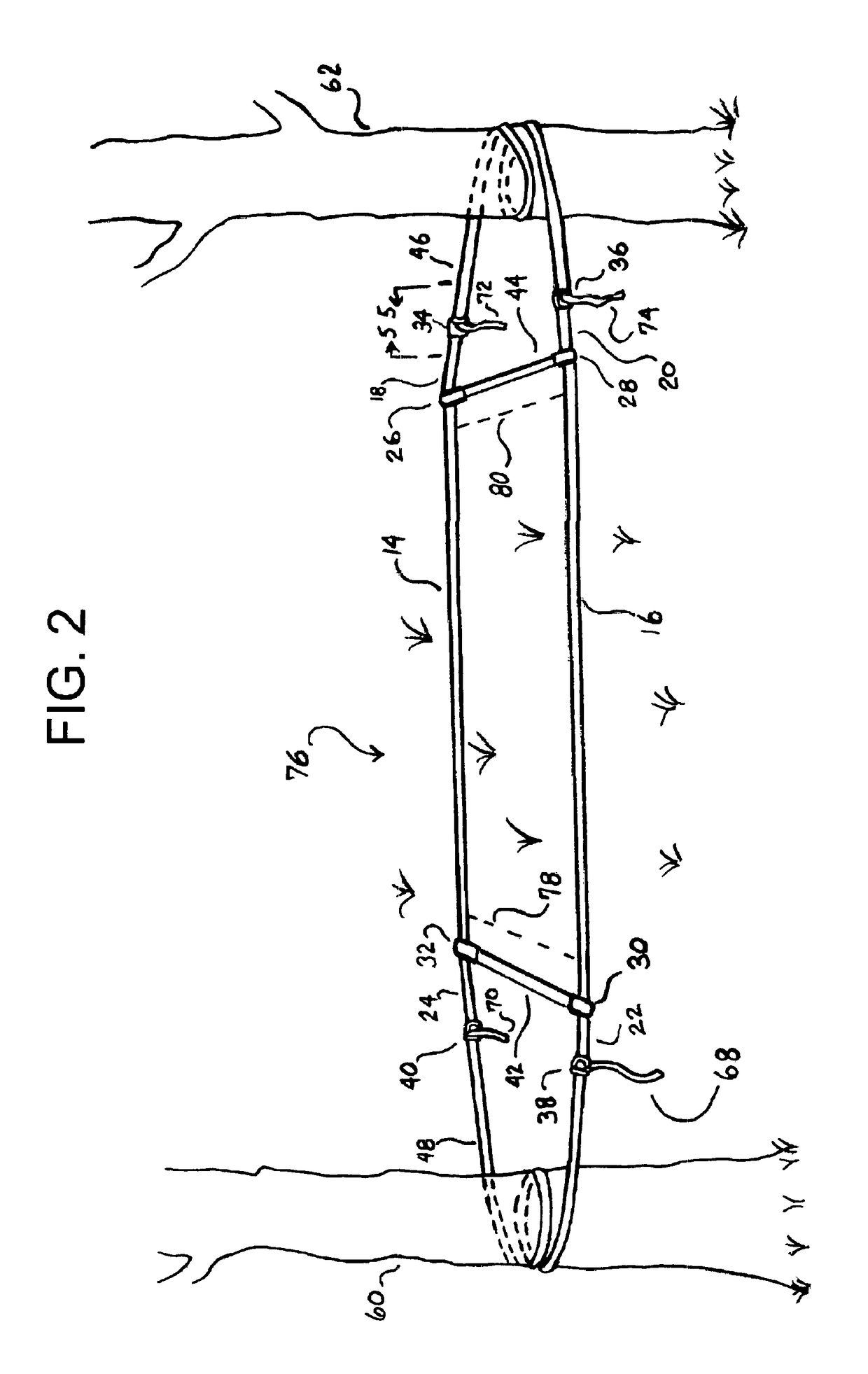Independent hammock suspension system
a suspension system and hammock technology, applied in the field of hammocks, can solve problems such as damage to the tree surface, and achieve the effects of reducing traditional sag, reducing lateral rotation, and alleviating torsional roll
- Summary
- Abstract
- Description
- Claims
- Application Information
AI Technical Summary
Benefits of technology
Problems solved by technology
Method used
Image
Examples
Embodiment Construction
[0027]Referring now to the invention in greater detail, attention is first directed to FIG. 1 which illustrates a hammock 10 having a sleeping platform 12 held in a substantially flat and level position above the ground by two longitudinally elongated opposing body edge web straps, namely a first strap 14, and a second strap 16. Each of the straps 14, 16 is attached to the opposing longitudinal body edges of the hammock sleeping platform by sewing the platform's longitudinal edges to the longitudinally elongated web straps.
[0028]In further detail, still referring to the invention of FIG. 1, the sleeping platform 12 is sufficiently wide and long for comfortable sleeping, consisting essentially of a width and length required to accommodate the occupant.
[0029]The construction details of the invention as shown in FIG. 1 are that the hammock sleeping platform 12 will be made of flexible fabric sufficient in strength to support the occupant.
[0030]Referring to FIG. 1, there are shown two l...
PUM
 Login to View More
Login to View More Abstract
Description
Claims
Application Information
 Login to View More
Login to View More - R&D
- Intellectual Property
- Life Sciences
- Materials
- Tech Scout
- Unparalleled Data Quality
- Higher Quality Content
- 60% Fewer Hallucinations
Browse by: Latest US Patents, China's latest patents, Technical Efficacy Thesaurus, Application Domain, Technology Topic, Popular Technical Reports.
© 2025 PatSnap. All rights reserved.Legal|Privacy policy|Modern Slavery Act Transparency Statement|Sitemap|About US| Contact US: help@patsnap.com



